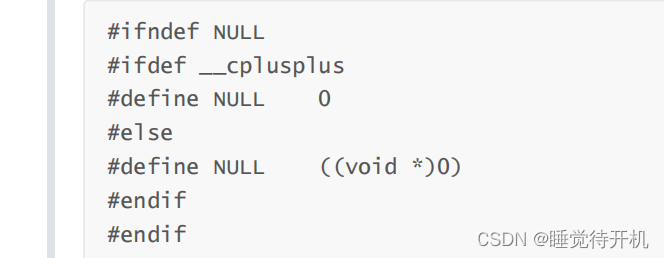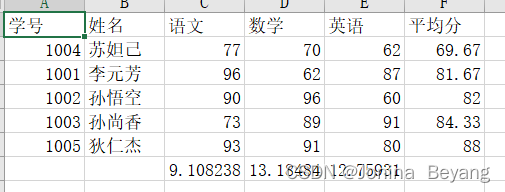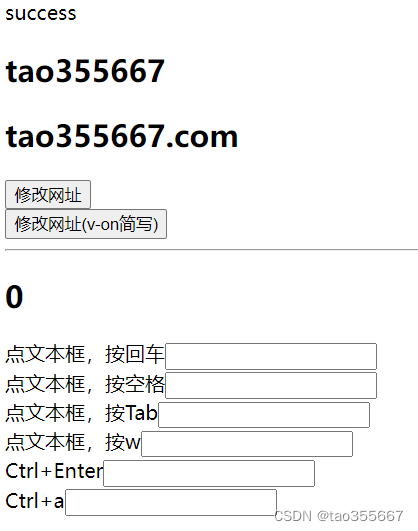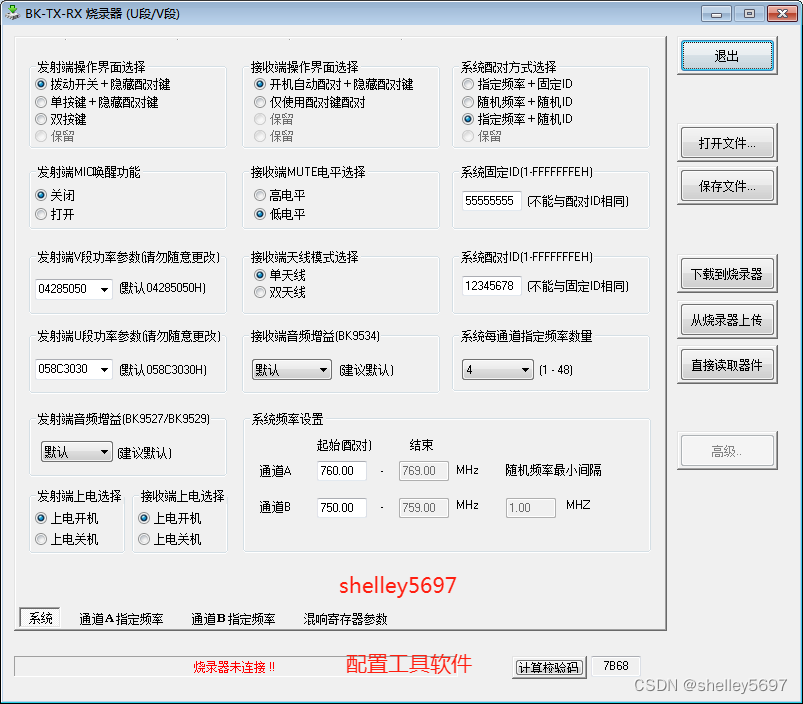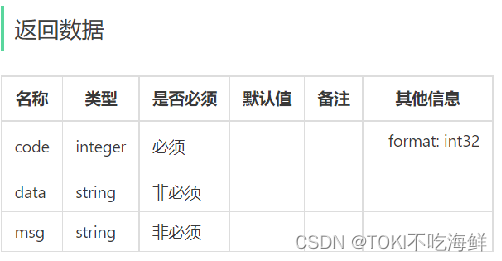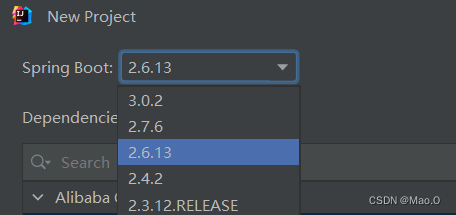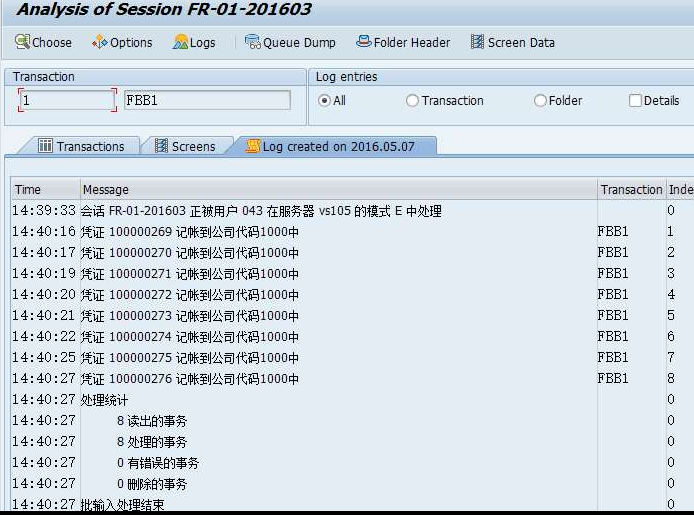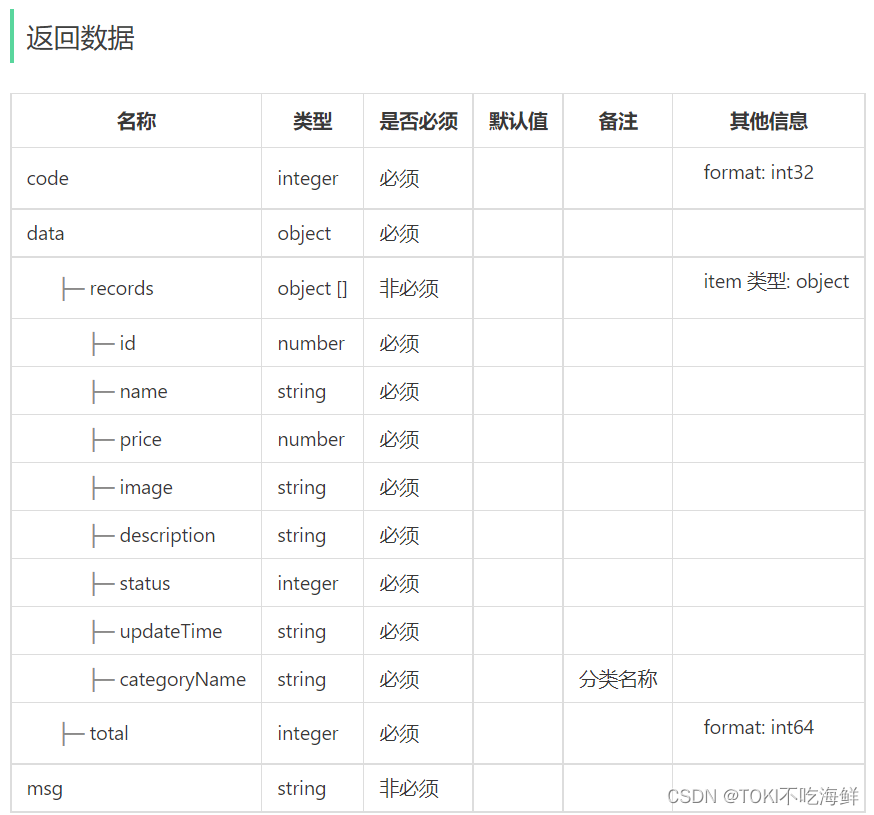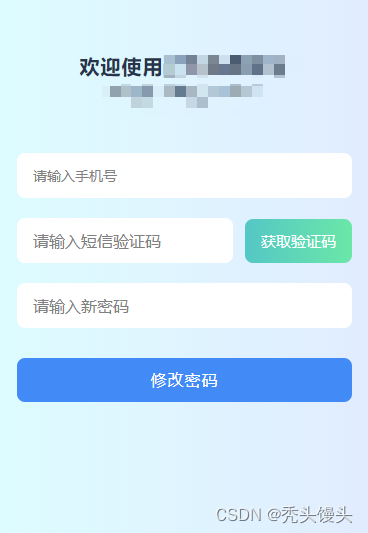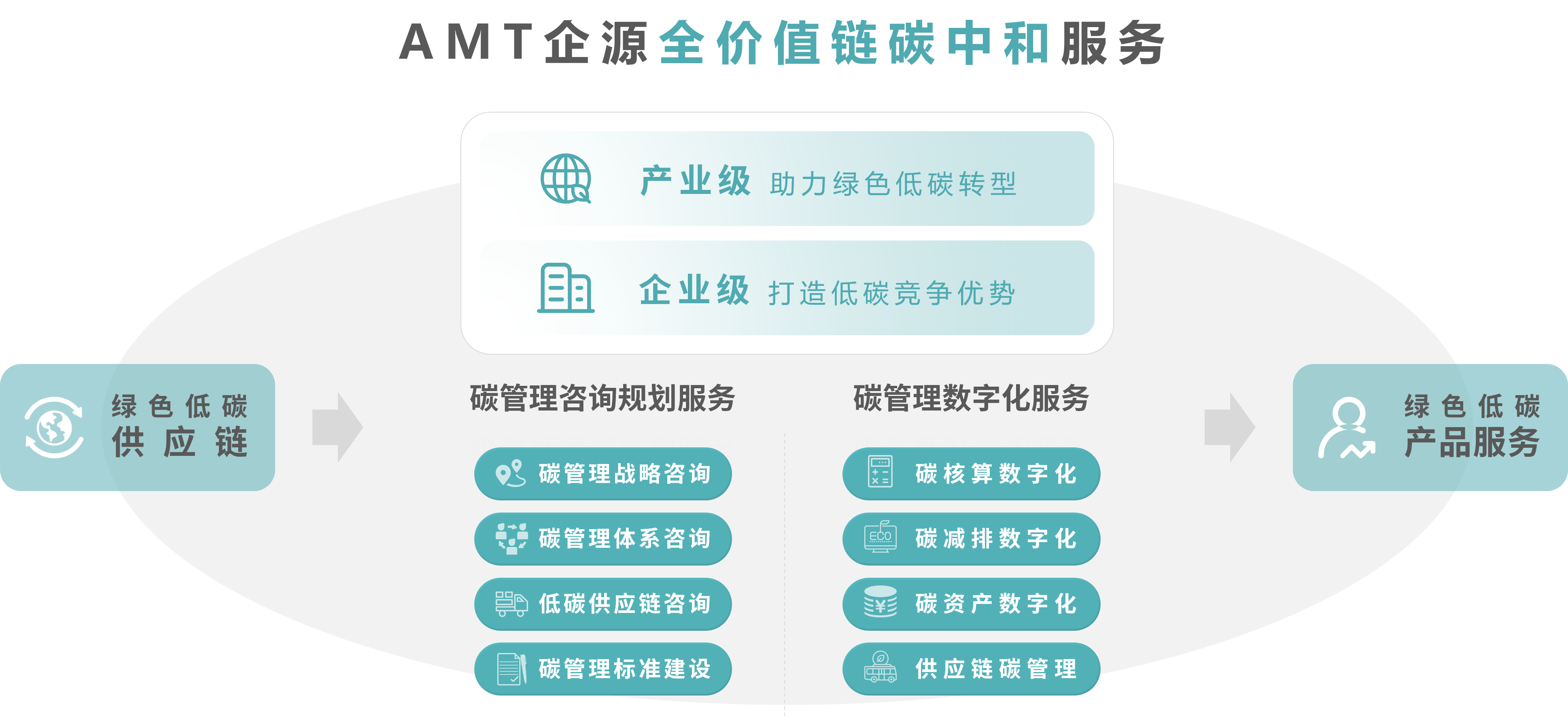1、REST 风格
1.1、REST 简介
- REST(Representational State Transfer),表现形式状态转换
在开发中,它其实指的就是访问网络资源的格式
1.1.1、传统风格资源描述形式
- http://localhost/user/getById?id=1
- http://localhost/user/saveUser
1.1.2、REST 风格描述形式
在 REST 风格中,一般用 模块名 + s 的格式描述资源,表示这是一类资源,而不是单个资源。
4 个常用的 REST 风格请求行为:
- http://localhost/users 查询所有用户信息 GET (查询)
- http://localhost/users/1 查询指定用户信息 GET (查询)
- http://localhost/users 添加用户信息 POST (新增)
- http://localhost/users 修改用户信息 PUT (更新)
- http://localhost/users/1 删除用户信息 DELETE (删除)
REST 风格下,对于同一个路径,不同的请求代表对资源不同的操作。也就是说,我们只需要一个路径和一个请求方式就可以确定一个访问行为。
根据 REST 风格对资源进行访问称为 RESTful 。
优点:
- 最大在优点就是隐藏资源的访问行为,无法通过地址得到对资源是如何操作的
注意:REST 风格只是一种风格,并不是一种规范,可以打破。也就是说我们想怎么写就怎么写,但是我们只是希望大家都遵守这种风格,方便开发。
1.2、RESTful 入门案例
RESTful 就是指使用 REST 风格开发项目。
1.2.1、设定 http 请求动作
REST 风格下,我们对资源的不同操作由路径和请求动作决定,这里的路径我们统一为 模块名 + s,所以我们需要把 Controller 类上面的 @RequsetMapping 中指定的该模块资源的统一前缀去掉。
添加请求动作只需要先把原本 Controller 类的方法上 RequsetMapping 注解的参数改为 模块名 + s ,然后通过 method 属性来给方法添加请求动作。
查询都是 GET、新增是 POST 、修改是 PUT、删除是 DELETE。
@RequestMapping(value = "/users",method = RequestMethod.POST)@ResponseBodypublic String save(@RequestBody User user){System.out.println("user save, name = " + user.getName() + " , age = " + user.getAge());return "{'module':'user save'}";}这里的新增用户请求需要传递用户参数,这里我们通过 @RequestBody 注解来表示从请求体中获取参数,也就是通过 json 来传递。
1.2.2、设定请求路径参数
也就是我们控制器类方法上面的注解 @RequsetMapping 中的 value 参数,这里需要根据需求决定需不需要带参数(比如删除 name 为 'zs' 的用户,那就需要指定 value="/users/name" 而不只是模块名+s)。
此外,对于带有路径变量的请求参数需要给形参前面添加注解 @PathVariable ,表示从请求路径中解析出该变量当做形参的值。
@RequestMapping(value = "/users/{id}",method = RequestMethod.DELETE)@ResponseBodypublic String delete(@PathVariable Integer id){System.out.println("user deleted ... user id => " + id);return "{'module': 'user delete'}";}完整代码:
@Controller
public class UserController {@RequestMapping(value = "/users",method = RequestMethod.POST)@ResponseBodypublic String save(@RequestBody User user){System.out.println("user save, name = " + user.getName() + " , age = " + user.getAge());return "{'module':'user save'}";}@RequestMapping(value = "/users/{id}",method = RequestMethod.DELETE)@ResponseBodypublic String delete(@PathVariable Integer id){System.out.println("user deleted ... user id => " + id);return "{'module': 'user delete'}";}@RequestMapping(value = "/users",method = RequestMethod.PUT)@ResponseBodypublic String update(@RequestBody User user){System.out.println("user deleted ... user => " + user.toString());return "{'module': 'user update'}";}@RequestMapping(value = "/users/{id}",method = RequestMethod.GET)@ResponseBodypublic String getById(@PathVariable Integer id){System.out.println("user get ... user id => " + id);return "{'module': 'user get'}";}@RequestMapping(value = "/users",method = RequestMethod.GET)@ResponseBodypublic String getAll(){System.out.println("user get all ...");return "{'module': 'user get all'}";}
}测试结果:
查询所有用户: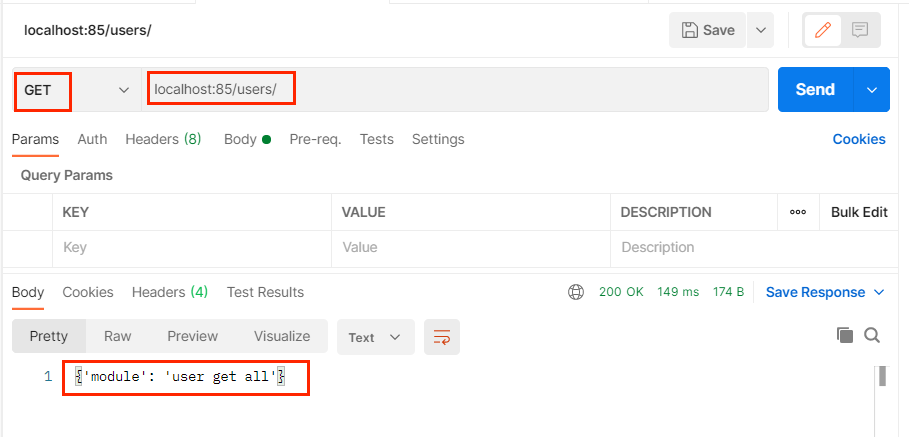
查询 id 为 1 的用户:
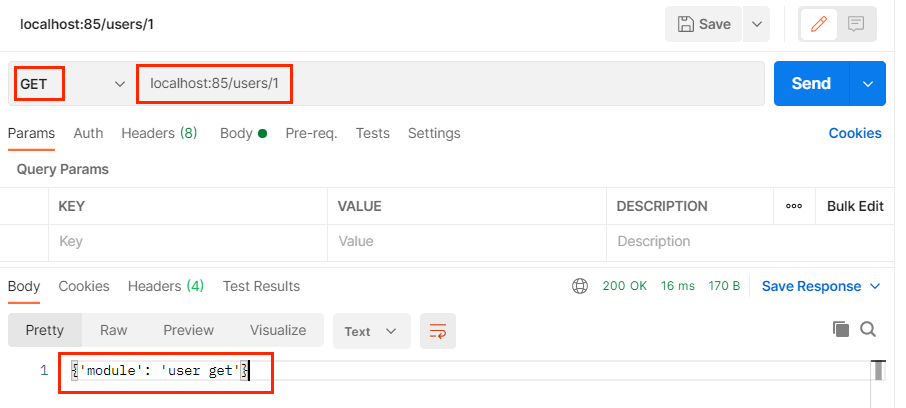
新增用户:

注意:新增用户时我们需要给控制器方法传递一个 User 类型创参数,因为需要使用 jackson 把我们的 json 转为 java 对象,这里要求该对象必须要有无参构造器,不然会报错!
删除用户:

修改用户:

1.2.3、请求参数总结
到现在我们共学习了三种请求参数的传递方法:
- @RequestBody
- @RequestParam(用的比较少)
- @PathVariable

1.3、RESTful 快速开发
这一节我们来对上面的代码进行简化开发,比如所有的控制器方法的前缀都是 "/users" ,所有的控制器方法上面都有一个 @ResponseBody (因为我们不需要返回页面)。
1.3.1、统一路径前缀
上一节使用 REST 风格后,我们发现所有的请求路径的前缀都是 "/users" + 路径变量,所以既然都有一个前缀 "/users" ,那么为什么不可以都踢出来呢:
@RequestMapping("/users")
public class UserController {// ...
}这样,对于那些在 REST 风格下路径本来就是 模块名+s("/users")的方法,直接就可以直接省去 @RequestMapping 中的 value 属性,对于请求路径包含路径变量的方法,可以省去前缀,就像这样:
@RequestMapping(value = "/{id}",method = RequestMethod.DELETE)public String delete(@PathVariable Integer id){System.out.println("user deleted ... user id => " + id);return "{'module': 'user delete'}";}1.3.2、@RestController
从上一节我们的代码中可以发现,控制器类的方法都带有一个 @ResponseBody ,这是因为因为我们不需要返回页面。所以这里我们可以直接简化把它提到控制器类上面:
@Controller
@ResponseBody
@RequestMapping("/users")
public class UserController {// ...
}但是 SpringMVC 还是觉得不够简化,它又提供了一个注解 @RestController ,它就相当于同时包含了 @ResponseBody 和 @Controller 两个注解,毕竟控制器类上面肯定是由 @Controller 注解的。所以以后我们直接这么写就行了:
@RestController
@RequestMapping("/users")
public class UserController {// ...
}1.3.2、标准请求动作注解
经过上一步的简化,我们的 UserController 现在变成了这样:
@RestController
@RequestMapping("/users")
public class UserController {@RequestMapping(method = RequestMethod.POST)public String save(@RequestBody User user){System.out.println("user save, name = " + user.getName() + " , age = " + user.getAge());return "{'module':'user save'}";}@RequestMapping(value = "/{id}",method = RequestMethod.DELETE)public String delete(@PathVariable Integer id){System.out.println("user deleted ... user id => " + id);return "{'module': 'user delete'}";}@RequestMapping(method = RequestMethod.PUT)public String update(@RequestBody User user){System.out.println("user deleted ... user => " + user.toString());return "{'module': 'user update'}";}@RequestMapping(value = "/{id}",method = RequestMethod.GET)public String getById(@PathVariable Integer id){System.out.println("user get ... user id => " + id);return "{'module': 'user get'}";}@RequestMapping(method = RequestMethod.GET)public String getAll(){System.out.println("user get all ...");return "{'module': 'user get all'}";}
}现在看起来还是很冗余,我们可以对这些方法的请求行为进行进一步简化,现在这么长的参数太扎眼了,现在我们的代码就变成了这样(把 value = "/{param}" 和 method = RequestMethpd.X 合并到一个注解中):
@RestController
@RequestMapping("/users")
public class UserController {@PostMappingpublic String save(@RequestBody User user){System.out.println("user save, name = " + user.getName() + " , age = " + user.getAge());return "{'module':'user save'}";}@DeleteMapping("/{id}")public String delete(@PathVariable Integer id){System.out.println("user deleted ... user id => " + id);return "{'module': 'user delete'}";}@PutMappingpublic String update(@RequestBody User user){System.out.println("user deleted ... user => " + user.toString());return "{'module': 'user update'}";}@GetMapping("/{id}")public String getById(@PathVariable Integer id){System.out.println("user get ... user id => " + id);return "{'module': 'user get'}";}@GetMappingpublic String getAll(){System.out.println("user get all ...");return "{'module': 'user get all'}";}
}显然一下子变得清新脱俗!舒服多了。
1.4、基于 RESTful 页面数据交互
实体类:
package com.lyh.domain;public class Book {private Integer id;private String type;private String name;private String description;public Book(){}public Book(Integer id, String type, String name, String description) {this.id = id;this.type = type;this.name = name;this.description = description;}@Overridepublic String toString() {return "Book{" +"id=" + id +", type='" + type + '\'' +", name='" + name + '\'' +", description='" + description + '\'' +'}';}public Integer getId() {return id;}public void setId(Integer id) {this.id = id;}public String getType() {return type;}public void setType(String type) {this.type = type;}public String getName() {return name;}public void setName(String name) {this.name = name;}public String getDescription() {return description;}public void setDescription(String description) {this.description = description;}
}
SpringMVC 配置类:
@Configuration
@ComponentScan("com.lyh.controller") // 扫描
@EnableWebMvc // 开启 json 转对象的功能等各种格式转换
public class SpringMvcConfig {}Sevlet 容器配置类:
public class ServletContainersInitConfig extends AbstractAnnotationConfigDispatcherServletInitializer {protected Class<?>[] getRootConfigClasses() {return new Class[0];}protected Class<?>[] getServletConfigClasses() {return new Class[]{SpringMvcConfig.class};}protected String[] getServletMappings() {return new String[]{"/"};}// 乱码处理@Overrideprotected Filter[] getServletFilters() {CharacterEncodingFilter filter = new CharacterEncodingFilter();filter.setEncoding("UTF-8");return new Filter[]{filter};}
}BookController 控制器类:
@RestController
@RequestMapping("/books")
public class BookController {@PostMappingpublic String save(@RequestBody Book book){System.out.println("book save ... book => " + book.toString());return "{'module':'book save'}";}@GetMappingpublic List<Book> getAll(){List<Book> list = new ArrayList<Book>();list.add(new Book(1,"编程","《图解Spark》","大数据技术"));list.add(new Book(2,"小说","《黄金时代》","王小波著作"));return list;}
}测试:
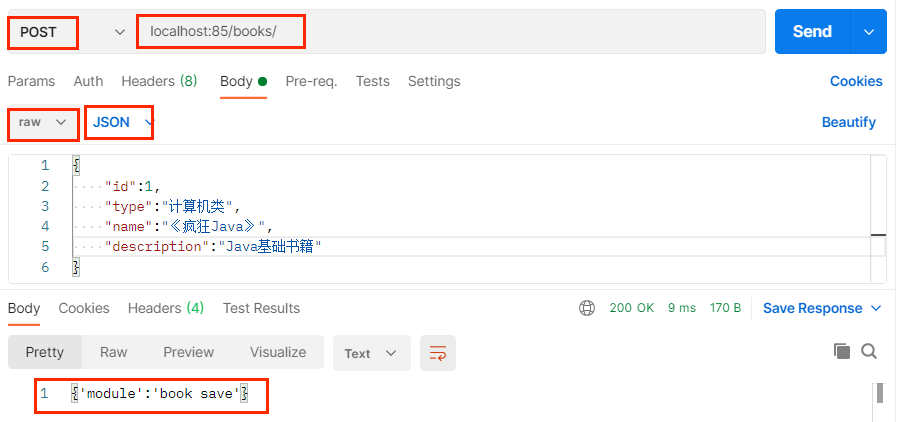
导入静态资源后访问 localhost:85/pages/boos.html 发现报错找不到映射:No Mapping for GET /pages/books.html 这是因为我们现在的请求都被 SpringMVC 拦截走了,其实这些静态资源应该是由 Tomcat 处理的。
1.4.1、放行非 SpringMVC 请求
上面的问题是对于静态资源的访问,本该是由 Tomcat 处理,但是前面我们在 Servlet 配置类中设置了所有请求都由 SpringMVC 来响应。所以,现在我们需要通过添加一个配置类来实现放行静态资源:
@Configuration
public class SpringMvcSupport extends WebMvcConfigurationSupport {@Overrideprotected void addResourceHandlers(ResourceHandlerRegistry registry) {// 当访问 /pages/下的资源时,走 /pages 目录下的内容registry.addResourceHandler("/pages/**").addResourceLocations("/pages/");registry.addResourceHandler("/js/**").addResourceLocations("/js/");registry.addResourceHandler("/css/**").addResourceLocations("/css/");registry.addResourceHandler("/plugins/**").addResourceLocations("/plugins/");}
}然后,我们需要让 SpringMVC 去加载这个新的配置类:

这样就可以访问到了:

